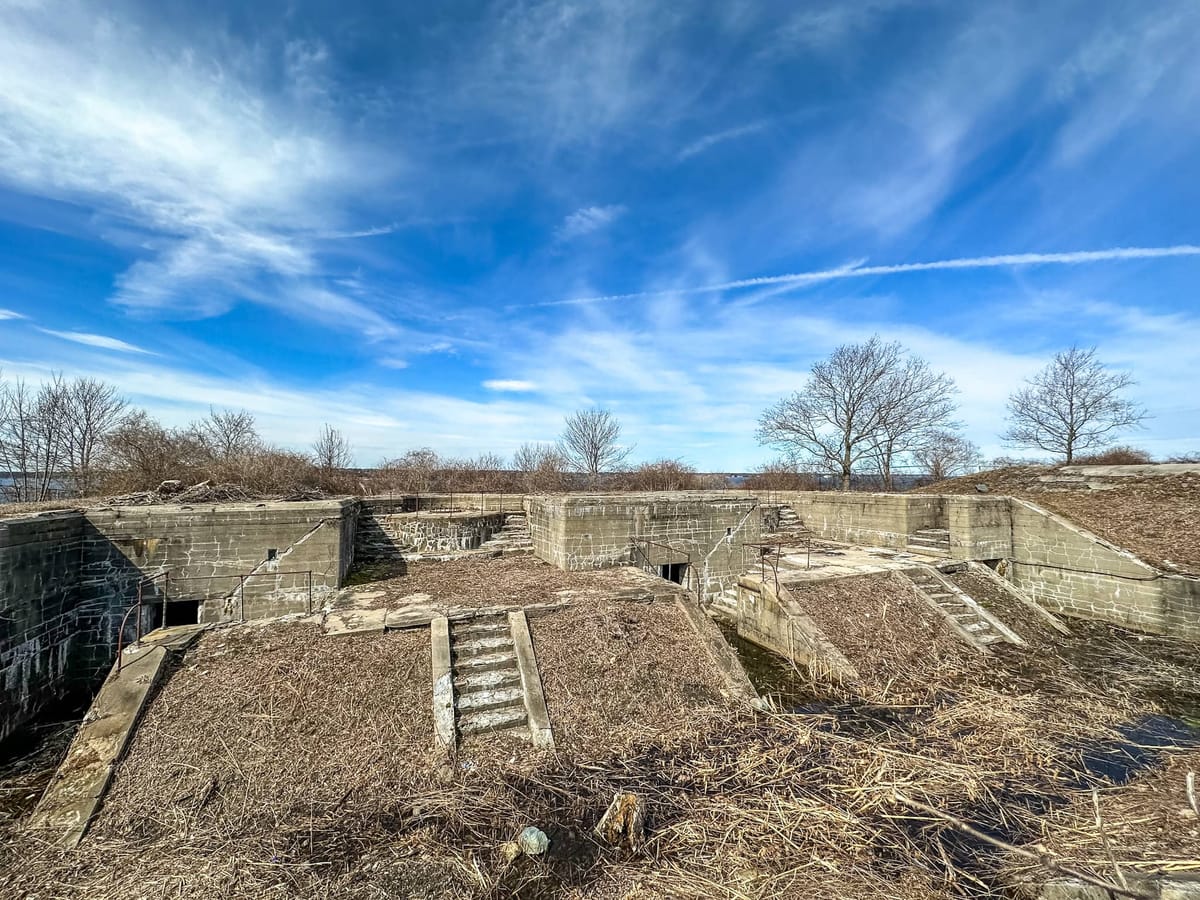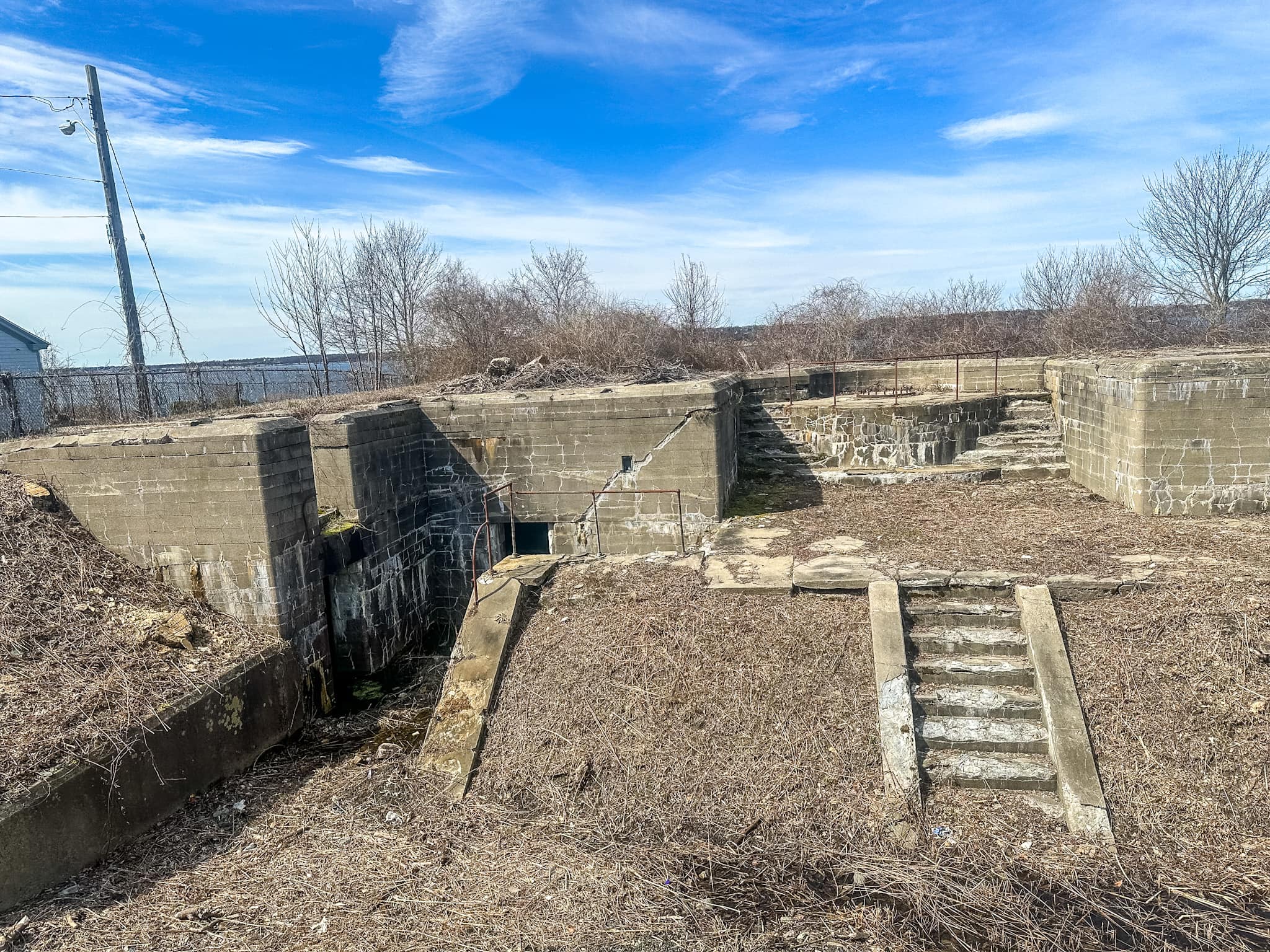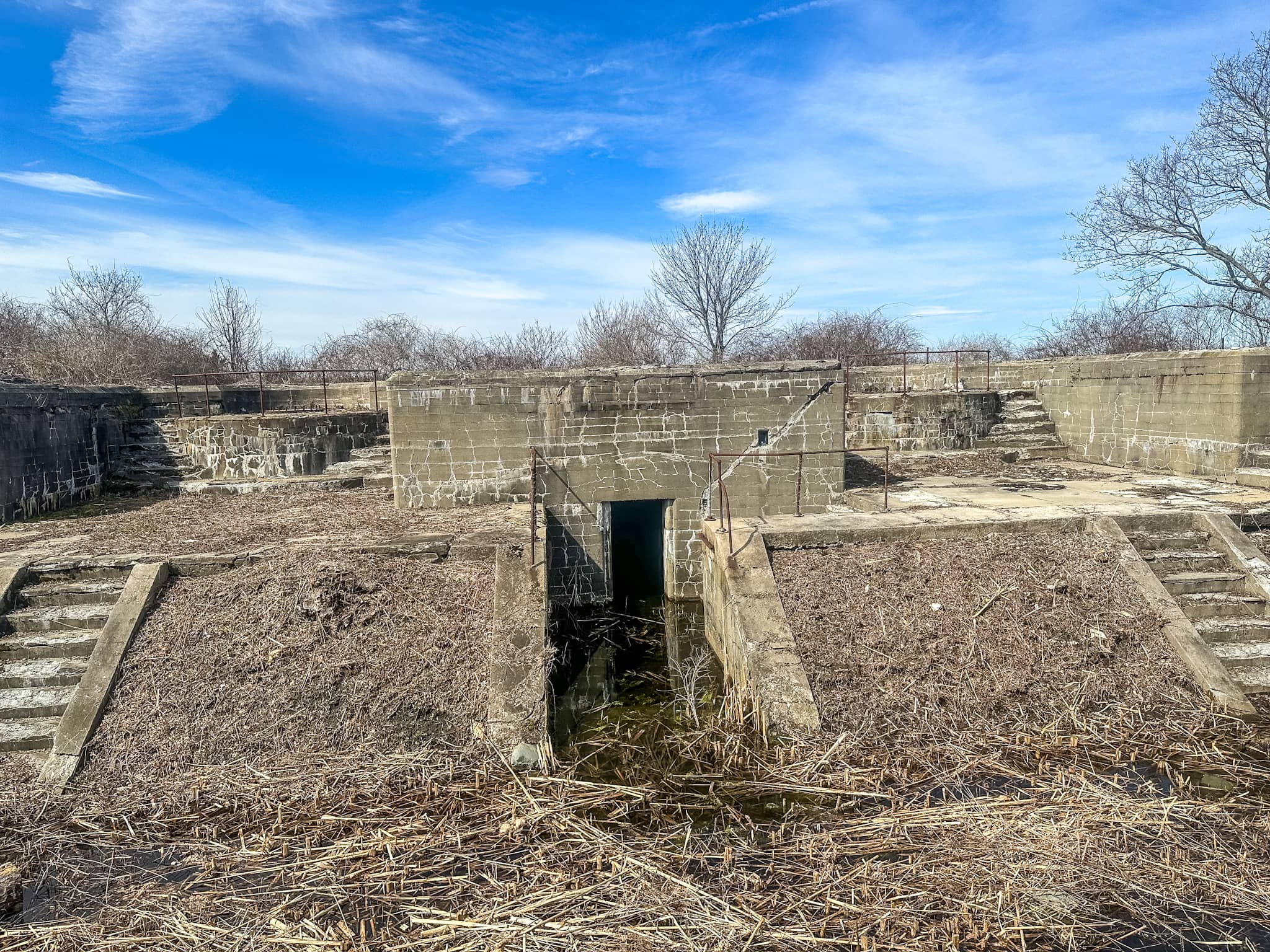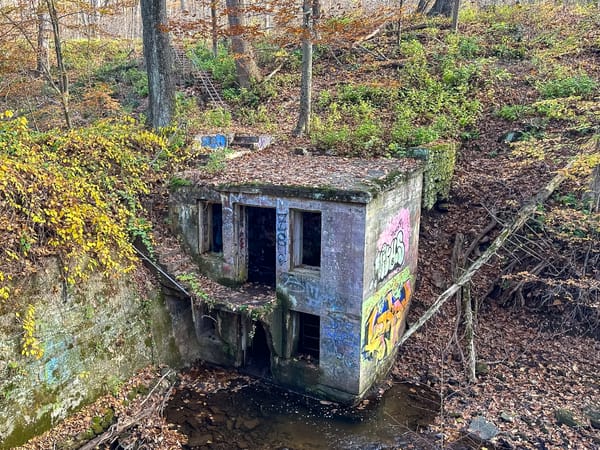Battery Talbot (Newport, RI)
Battery Talbot is a reinforced concrete coastal gun battery on Fort Adams in Newport, Rhode Island. It is now abandoned.

Hidden among the trees along Lincoln Drive in Fort Adams State Park, Battery Talbot stands as one of Rhode Island’s earliest and most distinctive Endicott-era fortifications. Built in 1899, this reinforced-concrete gun battery once helped protect Newport Harbor during a pivotal moment in America’s coastal-defense history.
Though long abandoned and now fenced for safety, Battery Talbot remains a rare example of an experimental Endicott-Period design — a tangible link to the transformation from 19th-century masonry forts to 20th-century modern artillery emplacements.

The Origins of Battery Talbot
In the decades following the Civil War, advances in naval gunnery and steel-clad warships rendered traditional brick forts obsolete. To adapt, the U.S. government formed the Endicott Board in 1885, which recommended building new concrete gun batteries armed with modern rapid-fire weapons.
Construction of Battery Talbot began in April 1898, and the U.S. Army Coast Artillery formally placed the installation into service on January 17, 1899.
The battery was officially named March 19, 1902 in honor of Lieutenant Silas Talbot, a Rhode Island native who served heroically in the Continental Army during the Revolutionary War and later commanded the USS Constitution.

Design and Armament
Battery Talbot was one of the earliest and most unusual Endicott-era batteries in Rhode Island. Built on a two-story concrete platform, it featured a compact yet complex design that reflected the Army’s early experimentation with new gun types and layouts.
- Upper Level: Two 4.72-inch Armstrong rapid-fire guns mounted on Armstrong pedestal carriages
- Lower Level: Underground magazines storing shells and powder
The British-made Armstrong guns were capable of firing shells weighing roughly 45 pounds over a range of several miles — powerful for their size and ideal for defending the narrow approaches to Newport Harbor.
Unlike later batteries, Battery Talbot had no mechanical hoists for moving ammunition between floors; all loading and transport were done by hand, a labor-intensive process typical of the Endicott system’s early years.

Battery Talbot During World War I
When the U.S. entered World War I, many coastal batteries were disarmed so their weapons could be shipped overseas or adapted for railway-mounted artillery. Battery Talbot was originally slated for such a transfer, but the order was quickly rescinded, and its guns remained in place through the end of the war.
By 1919, however, the small Armstrong guns were considered outdated. On July 22, 1919, the Army ordered the removal of Battery Talbot’s weapons and carriages, followed by a destruction order issued May 26, 1920.
Fortunately, the guns were spared from scrapping. One was presented to the city of Westerly, and the other — Gun #12123 — was gifted to the city of Newport. Today, that surviving piece from Battery Talbot can still be seen on display at Equality Park in Newport, offering a rare, tangible connection to Fort Adams’s Endicott-era defenses.
Battery Talbot Today
More than a century after its construction, Battery Talbot remains on the western edge of Fort Adams State Park, only a short walk from Lincoln Drive. The structure has fallen into disrepair — much of the lower level is flooded, and vegetation has overgrown the surrounding area — but the distinctive shape of the gun platforms is still visible through the brush.
In 2019, a large cleanup project led by the Fort Adams Trust helped clear years of vines and debris, revealing more of the battery’s original form. Despite these efforts, it remains fenced off to prevent injury and preserve what’s left of the fragile site. Visitors today can admire Battery Talbot safely from behind the barrier.
Visiting Information
- 📍 Address: Lincoln Drive, Newport, Rhode Island
- 🌐 GPS Coordinates: 41.475861, -71.341333
- 🅿️ Parking: Free roadside parking available along Lincoln Drive within Fort Adams State Park
- ⚠️ Access: The site is fenced and flooded — no interior entry allowed
- 🕰 Best Time to Visit: Early spring or late fall when vegetation is minimal
Battery Talbot is listed on the National Register of Historic Places as part of Fort Adams State Park (Reference #70000014).
Why Battery Talbot Matters
While less known than its larger neighbors, Battery Talbot holds a special place in the story of Rhode Island’s defenses. It represents an experimental stage in the Endicott Era, when engineers tested new calibers, foreign-made guns, and compact dual-platform designs.
Its preserved Armstrong gun in downtown Newport serves as a reminder of this transitional moment — when American coastal fortifications balanced old traditions with the dawn of modern warfare.
Quick Facts
- 🏗 Construction: April 1898 – January 1899
- ⚙️ Armament: Two 4.72-inch Armstrong guns on Armstrong pedestal mounts
- 💣 Operation: Ammunition moved manually (no hoists)
- 🪖 Named For: Lt. Silas Talbot (Revolutionary War hero)
- 🕰 Deactivated: 1919–1920
- 🏞 Now Part Of: Fort Adams State Park, Newport RI
- 🏛 National Register Reference: #70000014
Final Thoughts
Though modest in scale, Battery Talbot embodies the ingenuity and experimentation that defined the early Endicott Period. Today, it endures as a quiet relic of Rhode Island’s coastal-defense heritage — a structure bridging the gap between the massive stone fort of the 1800s and the concrete fortifications that followed.
For anyone exploring Fort Adams State Park, a glimpse of Battery Talbot is a chance to connect with the earliest chapter of Newport’s modern military history — and to see where America’s coastal defenses truly began.



